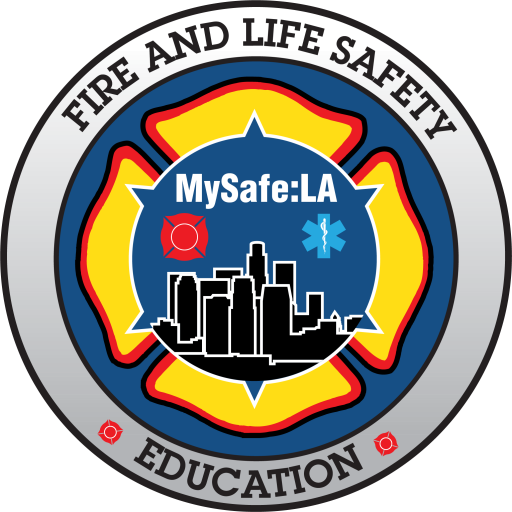The Los Angeles City Community Wildfire Protection Plan
A framework for hazard mitigation, community preparedness, and resilience
MySafe:Riverside is developing a Community Wildfire Protection Plan (CWPP) for the City of Los Angeles. Unlike disaster plans for first responders, a CWPP is aimed at the community involved, and is designed to share critical information on infrastructure, risks, response models, and mitigation relative to the risk from wildfire.
Take the wildfire survey!
As we build this CWPP, we need your opinions! Take our wildfire survey and have a chance a winning fun prizes like Starbucks cards, VISA gift cards, and much more. A minimum of ten winners will be awarded during the survey period (JUL 2023 – DEC 2023).

Why does L.A. City need a CWPP?
With more than 250,000 homes at risk of wildfire, the need for ongoing, detailed information on the risks, prevention activities, and response models in the City of Los Angeles is essential. Based on the CalFire published Very High Fire Severity Zone map, the San Fernando Valley is completely surrounded by extreme wildfire risk. Some of these risks include the most popular canyons in L.A., including but not limited to Laurel Canyon, Runyon Canyon, Mandeville Canyon, Coldwater Canyon, and Beachwood Canyon are all likely to experience a wildfire – just as the city is likely to experience a devastating earthquake at some point in the coming few years.

A complex city
The City of Los Angeles is a complex environment, with 178 neighborhoods and more than 90 different languages spoken. It is the heart of the motion picture industry, and a diverse array of cultures, communities, and languages. It is the seat of Los Angeles County, and the second most populous city (after the City of New York) in the United States.
The City and the County intersect in many areas, including culturally, economically, and geographically. Population density varies greatly, from as low as one person per square mile in some mountainous areas to as much as 50,000 persons per square mile in downtown Los Angeles. Overall, more than four million people call the City of Los Angeles home.
The City of Los Angeles is huge, and its boundaries are unique. Due to the size and scope of the land involved, it has a varied topography, climbing from sea level at the Venice beach community to Mount Lukens, which rises above 5,100 feet.
The city was originally a typical Mexican style village of 28 square miles when it was started in 1781. Since then, it has expanded to its current size, including multiple annexations of land and a total monopoly on the water supply from from the Owens River (which rises from the Sierra Nevada, 230 miles northeast of the city). When the annexations of Wilmington and San Pedro took place, a narrow strip of land connected the harbor to the downtown community of the city. Currently, the City of Los Angeles encircles five independent cities—Beverly Hills, Culver City, West Hollywood, Universal City, and San Fernando.
A mediterranean climate
Another factor that impacts the need for a CWPP is the L.A. climate model. Essentially, Los Angeles has traditionally benefited from a mediterranean (semiarid) mild climate. Historically, this relates to three key natural conditions: The region’s latitude is outside of the range of the most severe North Pacific winter storms; a cooling layer of marine air moderates the summer sun, and the tall mountain ranges shield the region from potentially intense blasts of desert heat and cold.
Historically, L.A. experiences two seasons: The first and most recognized is the dry and mildly warm period lasting from April to early November. The second is the “wet” season, when colder air and some periods of rain occur, typically from November to the end of March. The typical annual rainfall levels for the Los Angeles region are in the 15-inches range. During an El Nino year, the annual rainfall can increase by 50% or more.
Climate change is doing exactly that – it’s changing weather in Los Angeles, and a CWPP will help residents gain a better understanding of not only the impact on the local weather, but the impact on their daily lives as well. In 2023, nine atmospheric rivers dumped 11.5 inches of rain on L.A. in less than 14 days. While the growth that rain generated was lovely to see, by late summer it had become fuel for the next deadly wildfire.
So, how is climate change affecting us? Heat – deadly heat for extended periods. Drought. It was reduced in 2023, but how does the future look? Grim. Landslides? Mudslides? Flood watches? and of course – wildfires.
So, how is climate change affecting us? Heat – deadly heat for extended periods. Drought. It was reduced in 2023, but how does the future look? Grim. Landslides? Mudslides? Flood watches? and of course – wildfires.

